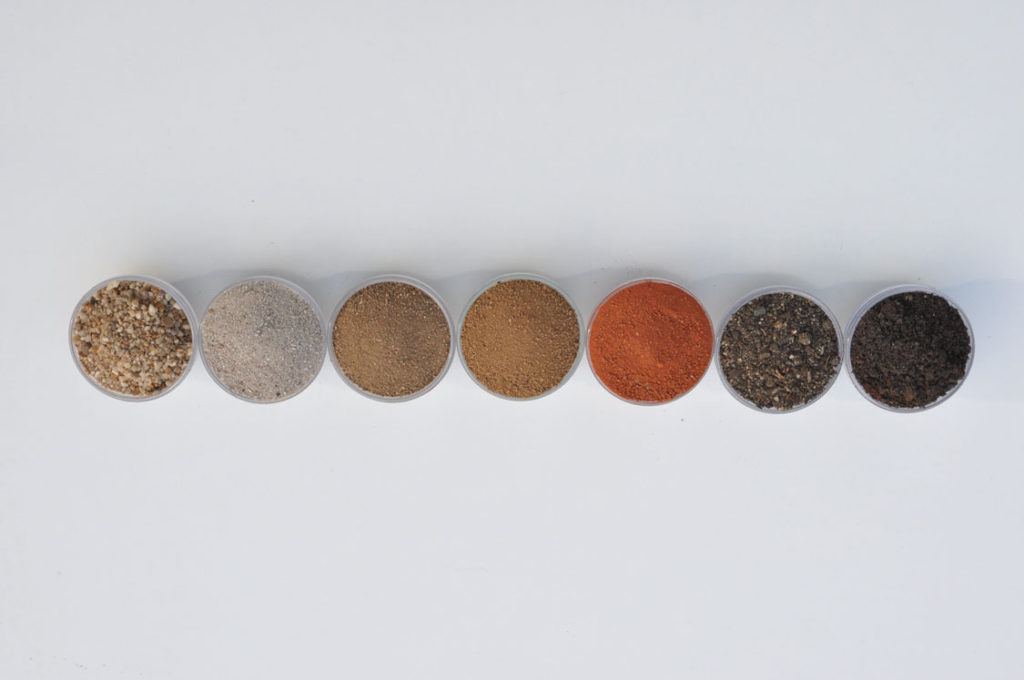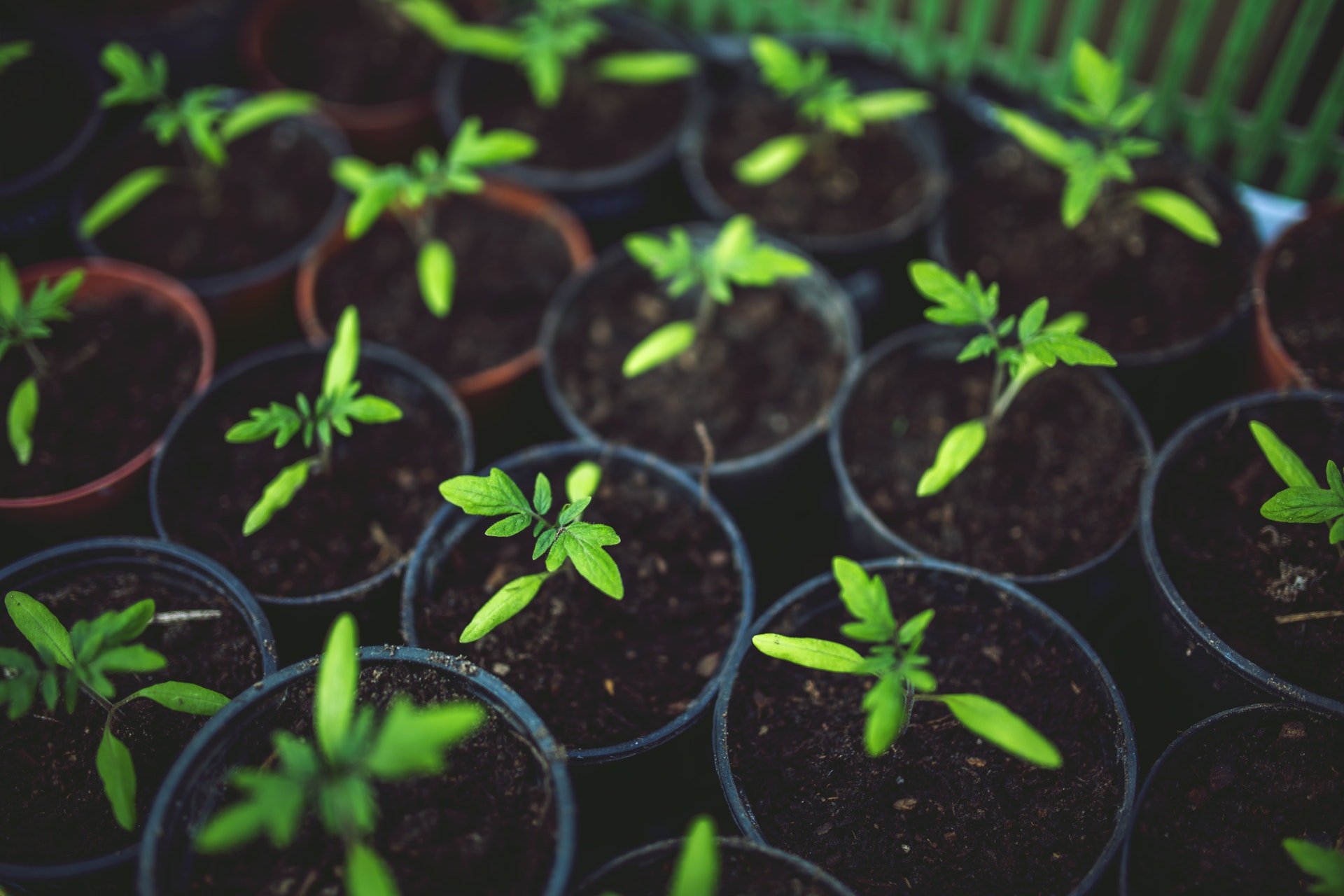In order for plants to thrive, soil should be well aerated, rich in nutrients and organic matter, and although free draining, it should still retain some moisture – but unfortunately this isn’t always the case. Here’s what you need to know about different types of soil.
Although poor soil can make gardening more of a challenge, there are ways you can improve it. The first step is finding out exactly what type of soil you’re dealing with.
Apart from topsoil and subsoil there are three main kinds of soil – loam, clay and sand – and many combinations of these. A simple DIY test will help you determine which type of soil you’re dealing with. You may even discover that different kinds occur in different areas of your garden.
YOU’LL ALSO LOVE: The ultimate winter gardening guide
Types of soil to know: Topsoil and subsoil
As the name suggests, topsoil is the uppermost layer of soil in a garden bed. It’s darker than the subsoil found below it and contains more organic matter and nutrients. Subsoil is denser, usually lighter in colour and cooler than topsoil as it contains little organic matter and less air.
When digging a hole, it’s a good idea to separate the topsoil and subsoil as you remove them. This way you can replace them in the correct order when you fill it in. The reason for this is that the airier topsoil contains many beneficial micro-organisms which will die if there’s not enough air at the bottom of the hole.
This is also why proponents of ‘no-dig’ gardening argue against ‘turning’ the soil, preferring to just lay an organic mulch, like peanut husks or bark chips on top of it, letting nature incorporate all the goodness into the lower levels of the earth.
Loam
Dark in colour, loam contains a good balance of sand, clay and silt as well as plenty of humus (decomposed organic matter). This type of soil is a gardener’s delight; it’s easy to cultivate because it’s friable (crumbly), highly fertile, well aerated, good at holding nutrients, and although it drains freely, it still retains moisture.
How to maintain it:
Avoid over cultivating the soil.
Keep the soil well mulched, preferably with organic substances as these introduce beneficial micro-organisms.

ABOVE: 1. Coarse river sand. 2. Fine, coastal sand often contains fragments of shells making it slightly alkaline. 3. Sandy loam. 4. Loam with minor red clay content. 5. Ochre-coloured soil, rich in iron oxide. 6. Good loamy soil with high humus content. 7. Dark, clay soil.
Sand
Sandy soils are usually light in colour, feel gritty and rough to the touch and don’t hold their shape. They don’t hold water well, contain little organic matter and usually lack nutrients. On the positive side they are easy to cultivate and warm up quickly in spring giving plants an early growth spurt.
How to improve it:
Dig in as much organic matter, like compost and manure, as possible to improve the soil’s texture, water-holding capacity and ability to retain nutrients.
As they don’t retain nutrients well, feed sandy soils more frequently with small quantities of fertiliser.
As water passes through sandy soils quickly, give plants smaller quantities of water more frequently.
Some sandy soils are hydrophobic, repelling water; keep these kinds well mulched.
In his book, Dry Gardening (Murdock Books), Jonathan Garner recommends applying a ‘clay soup’ to the sandy soil around thirsty plants to improve moisture and nutrient retention and reduce their hydrophobic tendencies. Simply add a few clay sods to half a bucket of water, break them up and stir until it resembles a thick soup. Pour around plants, no digging required.
Clay soil
This heavy, often dark, smooth soil is made up of very fine particles between which there are small air spaces. It is difficult to cultivate, being sticky when wet, yet hard and even cracking, when dry. In situations where drainage is poor, plants can rot because of waterlogging and a lack of air around the roots. Clay is also a cold soil taking time to warm up in spring, which can slow a plant’s root growth. On the upside, clay is not only richer in nutrients than sand, but also retains nutrients and holds water well.
How to improve it:
Autumn is the best time to dig in as much organic matter as you can; this will help bind the fine particles of the soil together, thereby improving the texture, which encourages drainage and lessens waterlogging. Adding sand is not an option, as large amounts are needed to make a difference.
Maintain a permanent mulch of rough compost, straw, bark chips, coir peat or shredded timber; as the mulch decomposes, earthworms and other micro-organisms draw the organic matter down into the soil, helping to improve its texture and increase the number of micro-organisms.
Applications of gypsum (calcium carbonate) in winter will help bind the particles together without changing the soil’s pH.
Never dig or walk on wet clay as you will compact it and press out all the air making it solid and rock hard.


